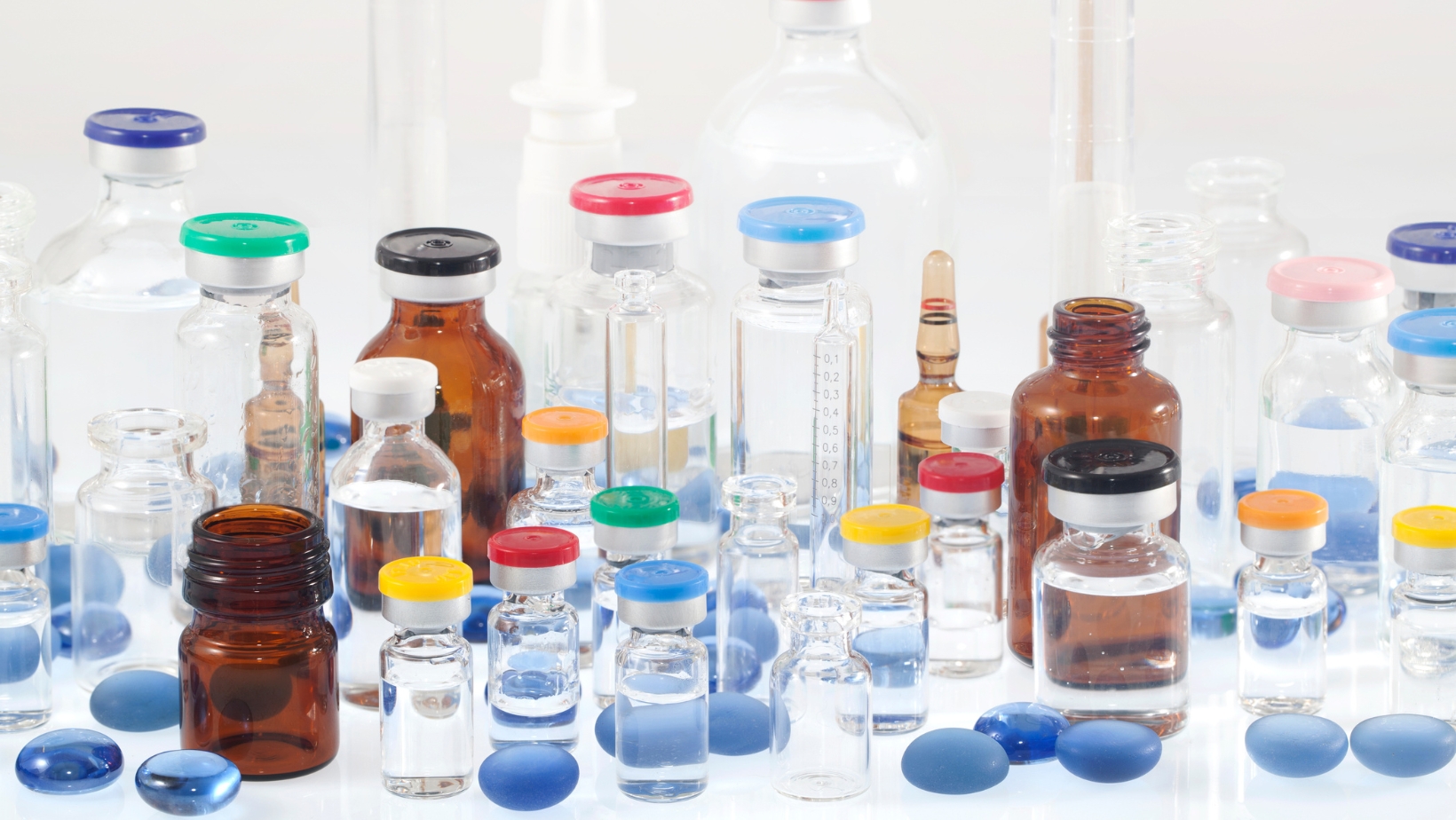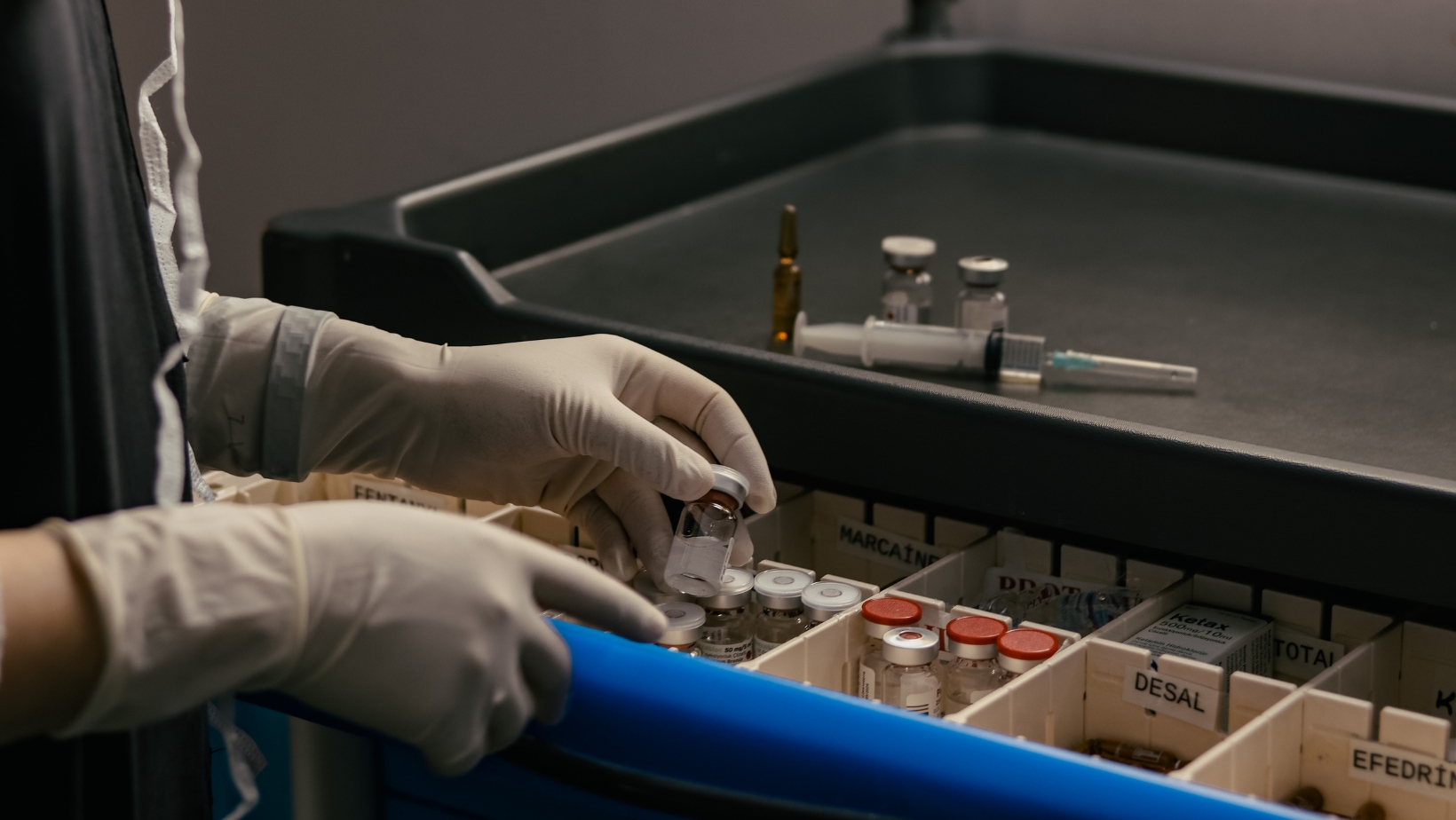Vials are crucial in storing, transporting, and using various substances in modern medicine and laboratory practice. Whether storing drugs, reagents, or biological samples, the preservation and stability of the contents depend on the right choice of vial.
Plastic vials have become particularly popular in recent years. They combine strength, lightness, and economy. These modern containers offer many advantages, from resistance to mechanical damage to the possibility of visual inspection of the contents. The variety of vial types, sizes, and materials allows you to find the optimal solution for your specific application.
Table of Contents
ToggleWhat Is a Vial?
Understanding what a vial is and why this type of container has become indispensable in medicine and science. A vial container is a small, hermetically sealed container that holds liquids, powders, or solids. Vials have found particularly wide application in medical, laboratory, and pharmaceutical practice. Protecting the contents from contamination and ensuring proper storage conditions are critical in these areas.
Let’s take a look at the main characteristics and features of vials:
- Sealed Container: A vial is typically sealed with a rubber stopper, screw cap, or crimped aluminum seal to maintain sterility.
- Material Variations: vials in glass or plastic offer durability and shatter resistance, while glass models provide chemical stability.
- Common Medical Use: A vial medical definition includes storing injectable medications. It also keeps vaccines and diagnostic samples.
- Laboratory Applications: Used for sample collection, reagent storage, and chromatography. This is important in research and clinical testing.
- Different Sizes and Shapes: vials come in various capacities. They range from micro-sized ampoules to larger multi-dose containers.
- Sterility and Safety: Many pre-sterilized vials maintain contamination-free conditions.
Understanding what a vial is and its diverse applications is crucial. It helps medicine, research, and pharmaceutical professionals select the right type.
Types of Vials: Glass vs. Plastic
Understanding the different types of vials is essential for selecting the right option. It is essential in medical, laboratory, and pharmaceutical applications. The two main categories are glass and plastic vials. Each type of vial offers unique advantages. They are based on material properties and intended use.
Let’s discuss the key features and benefits of glass models:
- High Chemical Resistance: Glass vials are non-reactive. It makes them ideal for storing sensitive medications and chemical samples.
- Superior Sample Integrity: The non-porous nature of glass prevents contamination. It ensures long-term stability.
- Autoclavable for Sterilization: vials can withstand high temperatures. It makes them suitable for sterilization processes.
- Available in Amber or Clear: Amber glass vials protect light-sensitive samples. Clear options allow for easy visibility.
- Best for Injectable Medications: Used extensively for vaccines, liquid drugs, and lab reagents.

Plastic vials offer these features and benefits:
- Shatter-Resistant and Durable: Plastic vials are lightweight and less prone to breaking, making them ideal for field work and transport.
- Cost-Effective and Versatile: Such vials are more affordable than glass. They are typically used in diagnostics, sample storage, and specimen collection.
- Chemical and Corrosion Resistance: Plastic vials are suitable for non-reactive solutions. They are not ideal for highly volatile substances.
- Variety of Closure Options: Available with screw caps, snap lids, or dropper tops. They are crucial for different applications.
- Best for Portable and Disposable Use: Glass vials are commonly found in diagnostic kits. They are also used in medical sample storage.
Understanding the key differences between glass and plastic vials is important. Professionals can choose the best types for their specific needs.
Applications of Medical Glass Vials
Medical glass vials are indispensable in the healthcare and pharmaceutical industries. They safely store medications, samples, and other critical substances. The versatility of vials allows them to be used in many applications. They ensure the safety and integrity of medical supplies. There are key applications of medical glass vials:
- Storage of Injectable Medications: Glass vials commonly store vaccines. It also holds insulin and other injectable drugs. Glass items ensure stability and prevent contamination.
- Pharmaceutical Packaging: vials are used for packaging liquid medications. They offer a sterile and secure environment for distribution.
- Sample Preservation: Used in laboratories to preserve biological samples like blood, urine, and tissue cultures.
- Vaccines and Biologics: Medical glass vials are commonly used to store biologics. They are vaccines and monoclonal antibodies. These require high levels of protection from external factors.
- Sterilization: Medical glass vials are autoclavable. It makes them ideal for storing materials that require sterilization.
- Long-Term Storage: Glass vials offer durability and chemical resistance. They ensure long-term storage of sensitive substances without degradation.
- Diagnostic Testing: Glass vials store reagents and diagnostic samples for laboratory analysis. They maintain sample integrity.
- Clinical Trials: They are essential for storing trial medications and samples. They are typically used in pharmaceutical research and clinical testing.
The reliability and protection of these types of vials make them an essential tool. It ensures the safe storage and transportation of vital medical substances.
Advantages and Disadvantages of Glass and Plastic Vials
It’s essential to consider the benefits and drawbacks when selecting vials for medical, laboratory, or pharmaceutical use. The table below compares the two to help professionals make informed decisions based on their specific needs:
| Feature | Glass | Plastic |
| Durability | Fragile, prone to breakage if dropped. | Shatter-resistant and more durable. |
| Chemical Resistance | Highly resistant to most chemicals. | It can react with certain substances or degrade over time. |
| Sterility | Autoclavable for sterilization. | It can be sterilized but may not withstand as many cycles. |
| Cost | Generally more expensive. | Plastic vials are more affordable, especially for large quantities. |
| Weight | Heavier, adding to transportation costs. | Lightweight, making them easier to handle and transport. |
| Environmental Impact | Reusable and recyclable. | Often disposable, it contributes to more waste unless appropriately recycled. |
| Storage Capacity | These vials can store a wide range of volumes. | Typically used for smaller volumes due to structural limitations. |
| Light Sensitivity | Amber glass can protect light-sensitive substances. | Transparent plastic may require additional light protection for sensitive materials. |
| Storage Conditions | It is ideal for long-term storage of sensitive medications. | Best for short-term storage or non-volatile substances. |
| Cost-effectiveness | It is expensive upfront but durable for long-term use. | It is economical for bulk storage, especially in disposable settings. |
Glass vials are ideal for sensitive substances and long-term storage. They are also crucial for situations requiring high chemical resistance.

Plastic vials are best for cost-effective, lightweight, and disposable applications, providing durability and ease of use. Plastic models may not be suitable for all chemicals or long-term storage. Choosing between glass and plastic vials depends on important aspects. They are material compatibility, budget, storage needs, and environmental considerations.
Choosing the Right Vial Medical and Laboratory Use
When selecting vials for medical applications, it’s essential to consider important factors. They are material, size, and purpose to ensure optimal safety, integrity, and efficiency. Whether you’re dealing with vial medical applications or laboratory experiments. The right choice is critical in preserving sample quality. It is also crucial in maintaining sterile conditions.
There are factors to consider when choosing vials:
- Material: Determine whether plastic or glass vials suit your specific needs. They are chemical resistance, durability, and compatibility with substances.
- Size and Volume: Choose a vial that matches the volume of the liquid or sample being stored. Larger models are typically used for multi-dose applications. Smaller vials are ideal for single-use or experimental purposes.
- Sterility Requirements: Ensure the vial is pre-sterilized or autoclavable for vial medical use. It depends on whether it will store injectable medications or biological samples.
- Sealing Mechanism: Opt for vials with rubber stoppers or screw caps to maintain sterility and prevent leakage.
- Cost and Volume: Plastic vials may be cheaper for larger quantities or disposable use. Glass models may offer better long-term value for sensitive applications.
- Transparency or Opacity: If light sensitivity is a concern, choose amber glass or opaque vials to protect the contents from degradation.
- Intended Use: Consider how the vial will be used. It may be injectable medications, specimen collection, research purposes, or long-term storage. Each application may require different features.
- Regulatory Standards: Ensure the chosen vials comply with relevant medical or laboratory regulations. They also must follow standards for safety and quality.





